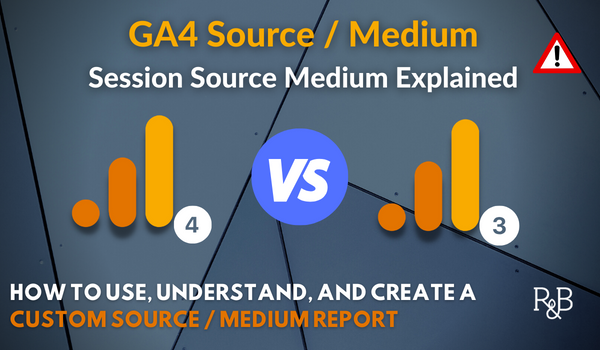Discovering the Principle of Secondary Dimensions in Google Analytics: Definition and Tactical Application
Discovering the Principle of Secondary Dimensions in Google Analytics: Definition and Tactical Application
Blog Article
Unveiling the Effect of Second Measurement in Google Analytics on Data Evaluation and Insights
In the realm of data analytics, the utilization of second dimensions within Google Analytics has emerged as a pivotal tool for extracting much deeper insights and unraveling complex patterns that may otherwise remain covered. By peeling back the layers of primary information sets, additional dimensions use a nuanced point of view that enriches the understanding of individual actions, web site performance, and the performance of advertising and marketing approaches. Nonetheless, real effect and untapped possibility of secondary dimensions are typically ignored, eclipsed by the allure of key metrics. As we browse with the intricate landscape of information evaluation, the significance of second dimensions comes to be progressively evident, dropping light on important details that hold the trick to notified decision-making and critical optimizations.
Checking Out the Principle of Additional Dimensions
Secondary dimensions in Google Analytics offer added insights by permitting individuals to examine primary data in combination with an additional attribute. By integrating second dimensions, individuals can delve deeper right into the data and discover beneficial correlations that could otherwise go undetected - what is a secondary dimension in google analytics.
By discovering the numerous additional measurements available in Google Analytics, users can open new understandings and maximize their digital advertising initiatives. In essence, additional measurements serve as a powerful tool for enhancing data analysis and driving actionable results.
Enhancing Information Analysis With Second Dimensions
Having established the foundational understanding of secondary measurements in Google Analytics and their crucial duty in data analysis, the focus now moves towards leveraging these second credit to improve the interpretation of analytics information (what is a secondary dimension in google analytics). By incorporating second dimensions into information analysis, analysts can acquire deeper understandings right into customer behavior, website performance, and advertising and marketing efficiency

Furthermore, secondary measurements assist in contextualizing main information metrics by providing added layers of details. This contextualization aids in understanding the 'why' behind the data patterns, assisting experts make informed choices and optimizations to enhance overall performance. Eventually, incorporating secondary dimensions enriches the information analysis process, leading to even more tactical activities and significant insights.
Revealing Hidden Insights With Additional Dimensions
Exploring the depths of analytics information with second dimensions reveals important insights that would or else stay covered. By incorporating secondary measurements in Google Analytics, businesses can uncover concealed patterns, trends, and relationships that supply a more thorough understanding of customer habits and website efficiency. These extra layers of information enable analysts to dive deeper into the primary measurements, such as traffic sources or touchdown web pages, and gain an extra nuanced perspective on exactly read what he said how various variables interact with each other.
Via the usage of second dimensions, experts can segment and contrast data across numerous measurements, enabling them to identify details variables that affect individual interaction, conversion rates, and overall success metrics. By pairing the key measurement of 'tool group' with the second measurement of 'age team,' marketers can identify which age demographics like accessing the internet site via mobile tools versus desktops.
Leveraging Secondary Measurements for Actionable Analytics
Building upon the insights introduced through additional dimensions in Google Analytics, businesses can currently harness this enriched data landscape to drive workable analytics and tactical decision-making. By leveraging second dimensions, companies can dig deeper right into their data to draw out important patterns, trends, and connections that may have formerly gone undetected. This deeper degree of evaluation allows services to get an extra detailed understanding of customer actions, campaign performance, and overall site performance.
One secret advantage of utilizing additional measurements for workable analytics is the capability to segment information based on certain requirements. This segmentation permits businesses to customize their campaigns and approaches to various audience groups, bring about more targeted and efficient advertising and marketing efforts - what is a secondary dimension in google analytics. Furthermore, additional measurements provide a more alternative sight of customer interactions, allowing companies to enhance their internet site content, style, and general user experience
Making Best Use Of Decision-Making With Additional Dimensions
To enhance tactical decision-making in analytics, leveraging additional measurements in Google Analytics can official site offer a more nuanced point of view on individual habits and project performance. By integrating additional dimensions into data analysis, services can dive much deeper right into the specifics of their internet site site visitors' interactions and interaction patterns. This extra layer of details enables an extra thorough understanding of exactly how different variables, such as demographics, gadgets, or web traffic sources, influence vital efficiency signs.

Verdict
Finally, the use of additional measurements in Google Analytics plays an essential function in boosting data analysis and uncovering surprise understandings. By discovering this concept, one can gain a much deeper understanding of individual behavior and make informed decisions based on workable analytics. Leveraging second measurements permits a more extensive interpretation of data and makes the most of the performance of decision-making processes.

Report this page